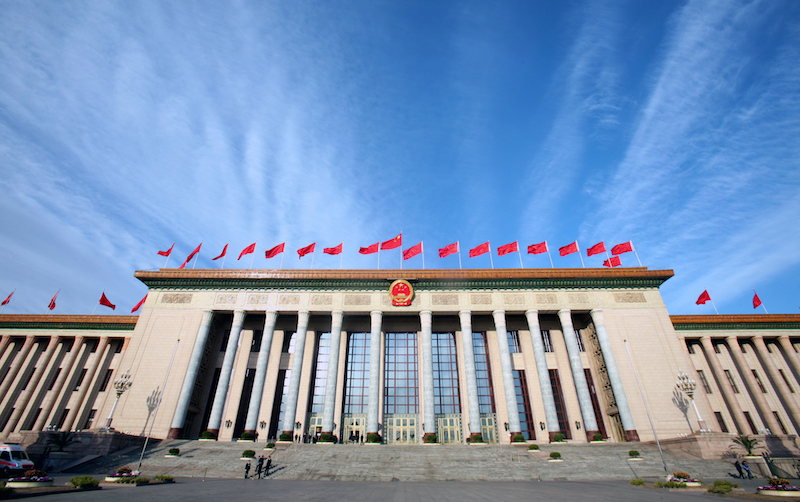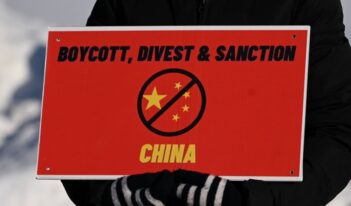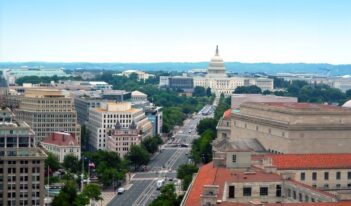
New requirements such as notice-and-comment periods and public hearings should improve transparency.
China’s central government, the State Council, recently mandated a 30-day public notice-and-comment process for most government rulemakings and institutionalized other mechanisms that increase public participation and transparency in the rulemaking process throughout the country more generally.
These new mechanisms—referred to collectively as the “Procedures”—were accomplished through amendments to two sets of State Council procedures that apply, respectively, to national administrative regulations (xingzheng fagui) issued by the State Council and to lower-level rules (guizhang) issued by the State Council departments and by local governments and their departments. The Procedures effectuate calls by the Chinese Communist Party (CCP) and the State Council to make rulemaking better reflect the will of the people and ensure higher quality regulation. Unexpectedly, the updates also codified requirements for CCP consultation and approval during the rulemaking process.
The State Council issued the original version of the Procedures in 2001 to implement basic rulemaking provisions in China’s Legislation Law, which established the principle that the Chinese people should “participate in legislation through various channels.” The term lifa—legislation—covers not only lawmaking by the National People’s Congress (NPC) but also government rulemaking for legally binding State Council regulations—issued by the State Council—and rules—issued by ministries and provincial governments. Both original Procedures were revised in late 2017, with effect from May 1, 2018.
The revised Procedures enhance public participation throughout the rulemaking process, which comprises four stages. The first stage involves preparing annual rulemaking plans. The Procedures now require the State Council to solicit public input on its annual plan for regulations, but this is optional for annual plans for issuing rules by State Council departments and local governments. In both cases, the finalized plans must now be made public.
At the second stage, agencies designated as drafting units formulate initial drafts of regulations or rules. Both Procedures now require the drafting unit to publish most proposed regulations and rules and to solicit written public input for a minimum 30-day comment period. The comment-seeking obligation is not ironclad. The State Council must publish draft regulations for public comment, unless it decides not to. In the case of rules, drafting units must publish drafts for public input, unless drafts must be kept secret.
Moreover, the comment period shall “in general” not be less than 30 days, but no examples are given of what exceptions to the 30-day rule might be. The foreign business community has long sought longer comment periods of at least 60 to 90 days to provide more time to translate drafts and obtain and translate input. The “not less than” language in both Procedures suggests that drafting agencies may provide longer than the minimum 30 days for drafts impacting foreign interests, but they do not specify such a possibility.
The third stage involves an examination of proposed regulations by the Legislative Affairs Office (LAO) of the State Council or of draft rules by the relevant State Council department or local government or department. Under both Procedures, the LAOs should circulate drafts presented for examination throughout the government and to select outside organizations, experts, and citizens for comments. The LAOs may also decide to conduct a second round of public notice-and-comment.
The fourth stage comprises the final decision and promulgation of the regulation or rule.
The Procedures now also call for post-enactment assessment and “cleanup,” which may lead to a revision or repeal of a regulation that would be subject to the same rulemaking procedures.
The Procedures provide additional avenues for expanded public participation. Public hearings are optional for draft State Council regulations, whereas they are now required for input on drafts of controversial rules. Some central ministries and many local governments have convened public rulemaking hearings for many years. The State Council never has, but the Procedures leave open that possibility. Both Procedures further codify recent practices of inviting outside experts, academic and research institutes, and social organizations to help draft or independently prepare “expert” drafts, to conduct “appraisal and consultation,” and to offer third-party assessments of drafts in various circumstances.
Although the Procedures increase the overall transparency and responsiveness of China’s regulatory process, additional requirements, many of which are being implemented in practice, would further improve the process. These include: disclosing the public’s comments and transcripts of public hearings, appraisals, and other meetings; disclosing the advice of outside experts, institutes, and social organizations; providing feedback on how the public’s comments were considered; requiring and disclosing regulatory impact analyses of the proposed regulations and rules; and establishing online rulemaking dockets to collect related materials in a permanent record.
The absence of a requirement to explain how the public’s input was considered is particularly disappointing, since the CCP and State Council have endorsed public comment feedback to ensure accountability. Under both Procedures, drafting agencies and LAOs must prepare explanations of the drafts they submit for review and decision, so preparing a public explanation of how the public’s input was considered should not require much extra effort.
As for remedies, the Chinese public cannot challenge a regulation in the courts. The Procedures do provide, however, that members of the public can seek review by the NPC Standing Committee or State Council if they believe a regulation or rule is inconsistent with a superior law or regulation. Moreover, the public can sue the government for failure to comply with procedural requirements that infringed their lawful rights and interests. The Procedures do not, though, explicitly mention such a remedy, and it is unclear whether requirements like the 30-day comment period will be deemed sufficiently concrete to permit such challenges.
Both Procedures also give the CCP a role in the rulemaking process. Previously, de facto CCP involvement in legislation was exercised pursuant to conventions and unpublished Opinions on Strengthening CCP Leadership over Legislation. The Opinions reportedly require that draft laws and regulations relating to political matters and major economic and social issues must first be deliberated by the Central Committee or the CCP organization at the same level as the drafting body. These principles of CCP approval have been written into both Procedures, which also require that regulations and rules implement the CCP’s line, policies, and decisions.
CCP leadership may be intended more to ensure policy oversight than to interfere with what is becoming a more transparent and participatory rulemaking process. Insertion of the CCP into state law, however, is a disturbing trend that raises concerns about China’s rule of law project. Nonetheless, the gradual institutionalization of transparency and public participation in rulemaking represents progress along the road to modernizing the Chinese governance system.




